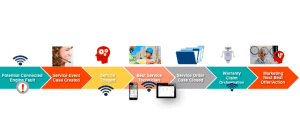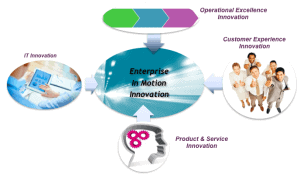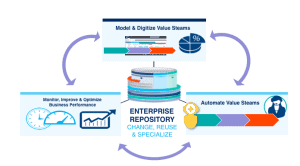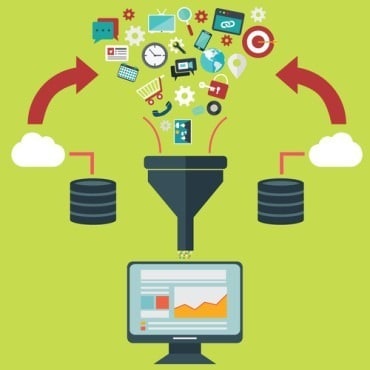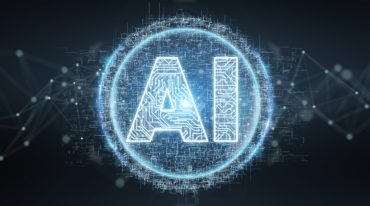
To create a successful “Enterprise-in-Motion,” simply applying more data isn’t enough.
These are exciting times.
Despite all the hype and confusion, innovations in digital domains such as artificial intelligence (AI) are delivering real value – especially for the customer experience. The 2010 cover article of the Economist was about the data deluge. It has become a reality. We will soon double the amount of information we generate every 12 hours. As a result, data science has emerged as a new and exciting multi-discipline practice.
But it is not all about the data.
More importantly, it is also about digital transformation through the automation of value streams. AI is the nervous system driving these end-to-end value streams. Automation is transforming the workplace at an accelerated pace. Digitization and automation of value streams aligned to continuously changing business objectives to execution is a core enabler of the enterprise in motion. It can help the enterprise move from PowerPoint wish list strategies to actual implementations. Enterprises need to also evolve from static architectures to continuous in-motion architectures.
Here is an example of a value stream for digital prescriptive maintenance. Notice it involves participants from multiple business units. It also involves IoT components and enterprise applications: all collaborating for optimizing the maintenance of the connected device. The value stream (sometimes also called value chain) is as strong as its weakest link.
These are also dangerous times.
We are witnessing the erosion of privacy. In corporations as well as oppressive regimes technology is being used, or rather abused, for control and even manipulation. New laws, such as the European Commission’s GDPR are trying to put the genie back. Combined with privacy challenges, security breaches of public as well as private enterprises is increasing at an alarming rate.
See also: API-first enterprise adoption — monetize or die
Digitization technologies such as 5G, while exciting for the potential of high connectivity for all domains, can have serious adverse impacts on our health and well-being. Progress in all technology domains could extract a very high price on the planet – and yes, the population at large.
Commercial enterprises are particularly vulnerable to these dangers – but with the right prioritization of cultural transformation (aka re-engineering) they can also benefit emerging digital technologies with tremendous success.
Most importantly enterprises need, real-time responsiveness that will be difficult to achieve without transformations of archaic cultures
Here is a quote from MIT Sloan & Deloitte that drives home the cultural challenges: “The history of technological advance in business is littered with examples of companies focusing on technologies without investing in organizational capabilities that ensure their impact. In many companies, (failures are) classic examples of expectations falling short because organizations didn’t change mindsets and processes or build cultures that fostered change.”
In most organizations, the “org chart” is vertical – with various executives focusing on their measurable business objectives. Many enterprises incentivize for silos. Value (aka value stream or value chain) is horizontal and crosses organizational boundaries. To be responsive and in-motion, the enterprise needs to digitize and automate its end-to-end value streams that cross organizational boundaries, both internal or external.
Enterprises are complex systems
In complex ecosystems, automation and responsiveness are not up to a single participant or entity. To understand and appreciate the complexity of enterprises think of a truly smart city. There is a plethora of intelligent and connected devices: smart lighting, smart parking systems, smart highways, smart buildings, just to a name a few.
But there are also smart agencies such as the police department or emergency services within the city. Smart transportation can leverage comprehensive intelligent command centers. The granule and composition could vary. We shall call all of these smart city nodes.
In order for the smart city to be in motion, the entire system of intelligent connected nodes needs to function in-tandem for specific objectives. As an example, consider the coordination and responsiveness that is needed – often real-time – to respond to either a potential or real hazard or a terrorist attack. Each node needs coordination with others in order to achieve timely and effective responsiveness. There will be multiple value streams that need timely orchestration of activities.
Thus in the maturity in-motion roadmap of smart cities, the coordination within purposeful value streams of various city nodes (pertaining to city agencies or units) becomes paramount. It requires coordination of connected devices, robots (physical or software), city workers, local agencies, constituents (aka citizens), federal agencies, and businesses for specific objectives.
The “Enterprise-in-Motion”
When it comes to enterprises, the past two decades witnessed many attempts to revamp the “enterprise” to accelerate and optimize their operations as well as innovations through leveraging emerging digital technologies. There have been many adjectives attempting to describe the various characteristics of the enterprise in the 21st century, modifying “enterprise” with “real-time,” “adaptive,” “agile,” “service-oriented,” “digital,” or “responsive.”
The enterprise in motion includes the characteristics of all the aforementioned enterprises, it is also “smart.” Like smart cities, “smart enterprises” are complex systems. Even medium and small-sized enterprises have too many moving parts. Silos and the absence of meaningful coordination could cause serious inefficiencies. The ecosystems of enterprises are becoming more complex.
Consider how service provisioning has changed over the past few years. Mitigating and remediating risks; connecting the increasingly demanding customer to the rest of the enterprise nodes in real time to resolve potential disputes, and even manufacturing end-to-end new products and services at an accelerated pace. These are all examples of complexity. The enterprise needs to be in motion in order to survive.
How can enterprises be in motion?
Have Enterprises with different characteristics as described above (real-time, adaptive, agile, service-oriented, digital, responsive, and smart) achieved their objectives?
The results have been a mixed bag.
Many enterprises have attempted but failed in transforming themselves – especially achieving the appropriate velocity of innovation and change.
Innovation is multi-faceted. Enterprises need to innovate for the customer experiences while at the same time optimizing their operational excellence. Therefore in addition to being responsive to the increasingly demanding digital customer, the enterprise needs innovations in its end-to-end value streams. An enterprise is an aggregation of value stream. Behind each customer request, customer interaction, or customer disputes there are value streams that involve multiple business units. The customer touch-point extends to the Enterprise. The Enterprise needs to orchestrate and coordinate (through value stream digitization) all its units dynamically (through automation) and intelligently (through AI) to respond effectively to the customer.
Most strategic initiatives are carried out under the banner of “digital transformation.” Digital transformation needs prioritization as well as strong executive buy-in. Most importantly it is not “one and done” project. The transformation has to be continuous. The responsiveness and agility need to be accelerated. The Enterprise has to be in Motion. The Enterprise needs to accelerate its velocity for change and optimization.
The enterprise in motion also needs rapid innovation with new products or services. In the realm of digital transformation — at the core of the enterprise in motion — “Fail Fast and Succeed Faster” needs to be embedded in its DNA. The enterprise needs to also innovate within the IT organizations: to be more responsive to the business while maintaining existing legacies.
Achieving innovation in all these four axes is a tall order.
But then again, it is not an option. The enterprise needs to be in motion for innovation in order to survive within the digital milieu. Most enterprises are lagging in innovation, as they are under the heavy burdens of their “legacies:” Legacy applications for sure, but also legacy cultures, organizational structures and, perhaps most of all, legacy mindsets.
Change is hard.
Being constantly in motion while adapting with increased velocities is even harder; harder but not impossible.
Through prioritized digital transformation initiatives, some enterprises are able to achieve unprecedented growth and success. The Innovator’s Dilemma of the previous decades is a picnic compared to the challenges enterprises are facing now and will continue to face in the foreseeable future – with exponentially growing disruptive, competitive, and even existential challenges.
Enterprises at rest will stagnate and die
With the appropriate combination of digital technology enablers – especially digital process automation – and the corresponding pragmatic cultural competencies and best practices, the Enterprise can think continuous motion for innovation while incrementally demonstrating tangible results.
Laws of enterprise “physics” are in operation. Enterprises that embark upon the “motion” journey will face some resistance, especially in the get-go: the law of inertia also applies to enterprises. With the appropriate prioritization and focus on results, the enterprise can accelerate and achieve unprecedented velocities with continuous Motion. But it has to turn on the digital transformation ignition and get going.



